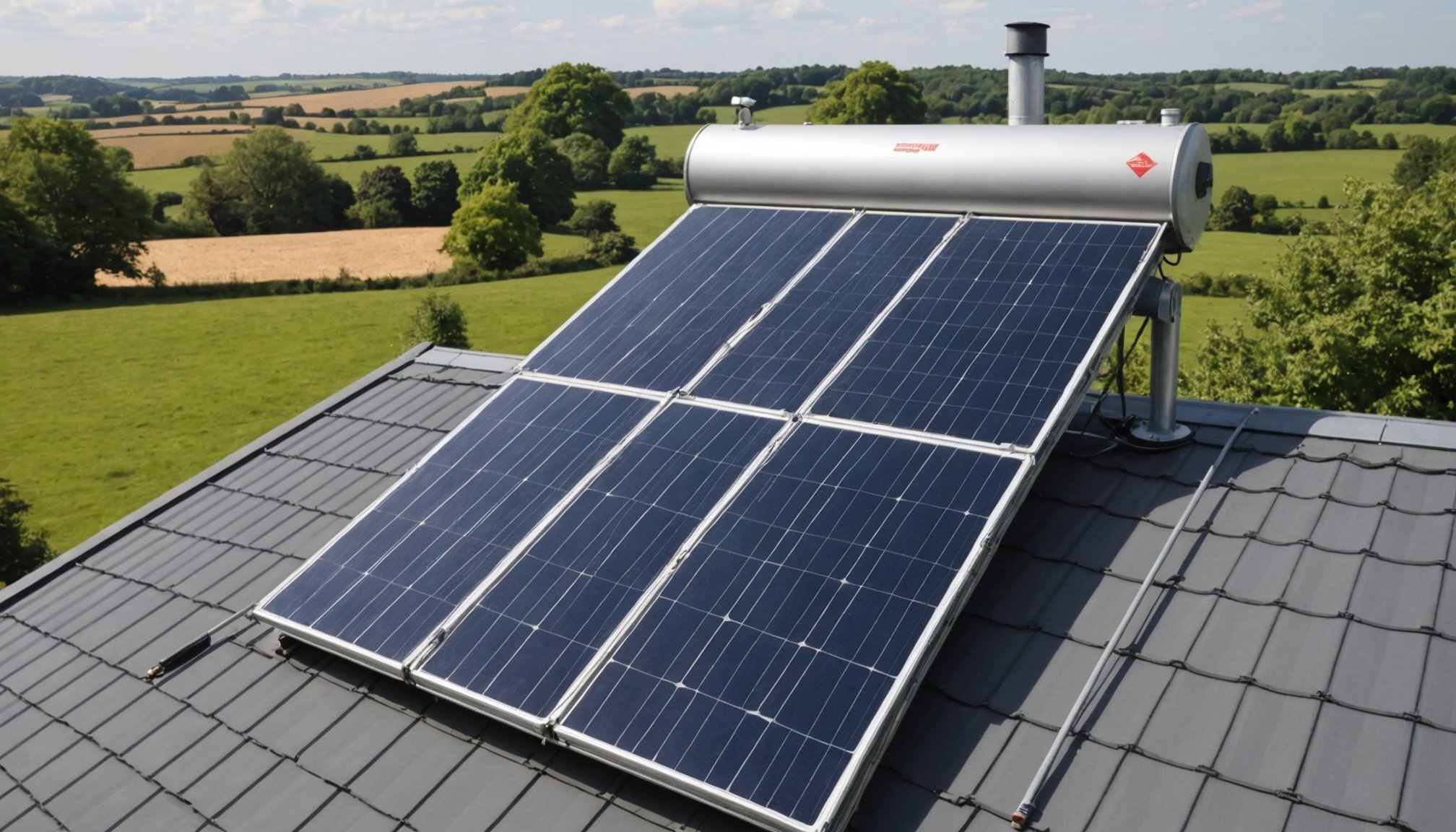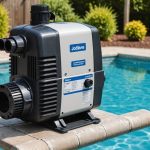Ultimate Tips for Successfully Installing a Solar Water Heating System in Your UK Home: Best Practices Unveiled
Understanding the Benefits of Solar Water Heating
Before diving into the installation process, it’s crucial to understand why a solar water heating system is an excellent choice for your UK home. These systems harness solar energy to heat water, reducing your reliance on traditional heating methods and lowering your energy bills.
“Solar water heating systems can save you a significant amount on your energy bills, especially if you use a lot of hot water,” notes a specialist from GreenMatch. “Additionally, these systems contribute to a more sustainable future by reducing your carbon footprint”[1].
Also to discover : Ultimate guide to successfully retrofitting your uk home with a heat pump: key tips and tricks
Here are some key benefits of solar water heating systems:
- Energy Efficiency: Solar water heating systems are highly efficient, converting a significant portion of the sun’s energy into usable heat.
- Cost Savings: By using solar energy, you can reduce your energy bills substantially.
- Environmental Benefits: These systems are a renewable energy source, helping you achieve a more sustainable lifestyle.
- Government Incentives: While there are no direct grants for solar PV installations, you might be eligible for other incentives like the Renewable Heat Incentive (RHI) for solar water heating[2].
Choosing the Right System for Your Home
Selecting the appropriate solar water heating system is vital for optimal performance and efficiency.
In the same genre : Ultimate guide to maximizing cavity wall insulation for your uk home
Types of Solar Water Heating Systems
There are primarily two types of solar water heating systems:
- Direct Circulation Systems: These systems circulate water through the solar collectors and into the home.
- Indirect Circulation Systems: These systems use a heat transfer fluid to collect heat from the solar collectors and then transfer it to the water in your home.
For the UK climate, indirect circulation systems are often recommended due to their ability to handle freezing temperatures.
Solar Collectors and Storage
- Solar Collectors: These are the panels that capture solar energy. They can be either flat plate collectors or evacuated tube collectors. Evacuated tube collectors are more efficient in colder climates.
- Water Tank: This is where the heated water is stored. It’s essential to choose a well-insulated tank to maintain the water temperature.
Here’s a comparison of different components you might consider:
| Component | Description | Cost Range |
|---|---|---|
| Solar Collectors | Flat plate or evacuated tube collectors | £1,000 – £3,000 |
| Water Tank | Insulated storage tank | £500 – £1,500 |
| Heat Exchanger | For indirect circulation systems | £300 – £800 |
| Pumps and Controls | Circulation pumps and control systems | £200 – £500 |
Assessing Your Home’s Suitability
Not all homes are equally suitable for solar water heating systems. Here are some factors to consider:
Roof Orientation and Condition
- South-Facing Roofs: These are ideal for solar panels as they receive the most sunlight throughout the day.
- Roof Condition: Ensure your roof is in good condition and can support the weight of the solar collectors. Materials like asphalt, composite shingles, and slate are suitable, but thatched or wooden roofs are generally not recommended[4].
Space and Ventilation
- Available Space: You need enough space on your roof for the solar collectors. A typical system requires about 3-4 square meters.
- Ventilation: Proper ventilation is crucial to ensure the system operates efficiently and to prevent overheating.
Installation Process
The installation process involves several key steps:
Planning and Permission
- Planning Permission: In some cases, especially if you live in a conservation area or a historical site, you may need to obtain planning permission before installing the system[1].
- Professional Consultation: It’s highly recommended to consult with a professional solar installer to assess your home’s suitability and to handle the installation.
Installation Steps
Here is a detailed breakdown of the installation process:
- Site Assessment: The installer will assess your home to determine the best location for the solar collectors and the water tank.
- Installation of Solar Collectors: The solar collectors are mounted on the roof, ensuring they are securely fastened and angled correctly.
- Installation of Water Tank and Heat Exchanger: The water tank and heat exchanger are installed in a suitable location, usually in a loft or a dedicated room.
- Connecting the System: The solar collectors, pumps, and controls are connected to form a complete system.
- Testing and Commissioning: The system is tested to ensure it is working correctly and efficiently.
Maintaining Your Solar Water Heating System
To ensure your solar water heating system operates at its best, regular maintenance is essential.
Routine Checks
- Inspect Solar Collectors: Regularly inspect the solar collectors for any signs of damage or debris.
- Check Pumps and Controls: Ensure the pumps and controls are functioning correctly.
- Inspect Water Tank: Check the water tank for any leaks or signs of wear.
Annual Maintenance
- Professional Inspection: It’s recommended to have a professional inspect the system annually to ensure everything is in good working order.
Here are some tips for maintaining your system:
- Clean the Solar Collectors: Clean the solar collectors regularly to ensure they are absorbing the maximum amount of sunlight.
- Check for Leaks: Regularly check the system for any leaks or water damage.
- Update Controls: Ensure the control systems are updated to optimize performance.
Combining with Other Renewable Energy Systems
For maximum energy efficiency and cost savings, consider combining your solar water heating system with other renewable energy systems.
Solar Panels and Battery Storage
- Solar Panels: Installing solar panels can provide electricity to power your home and charge a battery storage system.
- Battery Storage: A battery storage system can store excess energy generated by your solar panels for use during periods of low sunlight.
Air Source Heat Pumps
- Air Source Heat Pumps: These can be used in conjunction with solar water heating systems to provide additional heating and cooling.
- Underfloor Heating: Air source heat pumps can be integrated with underfloor heating systems for efficient and comfortable heating[3].
Here’s an example of how these systems can work together:
| System | Role | Benefits |
|---|---|---|
| Solar Water Heating | Heats water using solar energy | Reduces energy bills, environmental benefits |
| Solar Panels | Generates electricity | Powers your home, charges battery storage |
| Battery Storage | Stores excess energy for later use | Provides energy during periods of low sunlight |
| Air Source Heat Pumps | Provides additional heating and cooling | Efficient heating and cooling, can integrate with underfloor heating |
Government Grants and Incentives
While there are no direct grants for solar PV installations, there are incentives available for solar water heating systems.
Renewable Heat Incentive (RHI)
- RHI: This scheme provides financial support to homeowners who install renewable heat technologies, including solar water heating systems.
- Smart Export Guarantee (SEG): Although primarily for electricity generation, understanding the SEG can help you navigate other renewable energy incentives[2].
Here’s what you need to know about the RHI:
- Eligibility: You must have a renewable heat technology installed by an MCS-certified installer.
- Payments: You receive quarterly payments over a period of seven years.
- Application: You need to apply through the Ofgem website.
Case Studies and Real-Life Examples
To better understand the practical benefits, let’s look at some real-life examples.
Case Study 1: A Family Home in the UK
A family in the UK installed a solar water heating system along with solar panels and an air source heat pump. Here’s their experience:
“We were amazed at how much we could save on our energy bills. The solar water heating system reduced our hot water costs by about 70%, and the solar panels and air source heat pump further reduced our overall energy bills. It was a significant investment, but it has paid off in the long run,” said the homeowner.
Case Study 2: A Business Using Solar Thermal
A small business in the UK installed a solar thermal system to heat water for their operations. Here’s what they experienced:
“The solar thermal system has been a game-changer for us. It has significantly reduced our energy costs and helped us achieve our sustainability goals. The initial investment was substantial, but the long-term benefits have been well worth it,” stated the business owner.
Installing a solar water heating system in your UK home is a smart decision that can lead to significant energy savings and a reduced carbon footprint. By understanding the benefits, choosing the right system, assessing your home’s suitability, and maintaining the system properly, you can ensure optimal performance and efficiency.
Remember, combining your solar water heating system with other renewable energy technologies like solar panels, battery storage, and air source heat pumps can further enhance your energy efficiency and cost savings.
As you embark on this journey towards a more sustainable and energy-efficient home, keep in mind the government incentives available and the real-life examples that demonstrate the practical benefits of these systems. With the right approach, you can make a significant step towards achieving net zero energy in your home.





